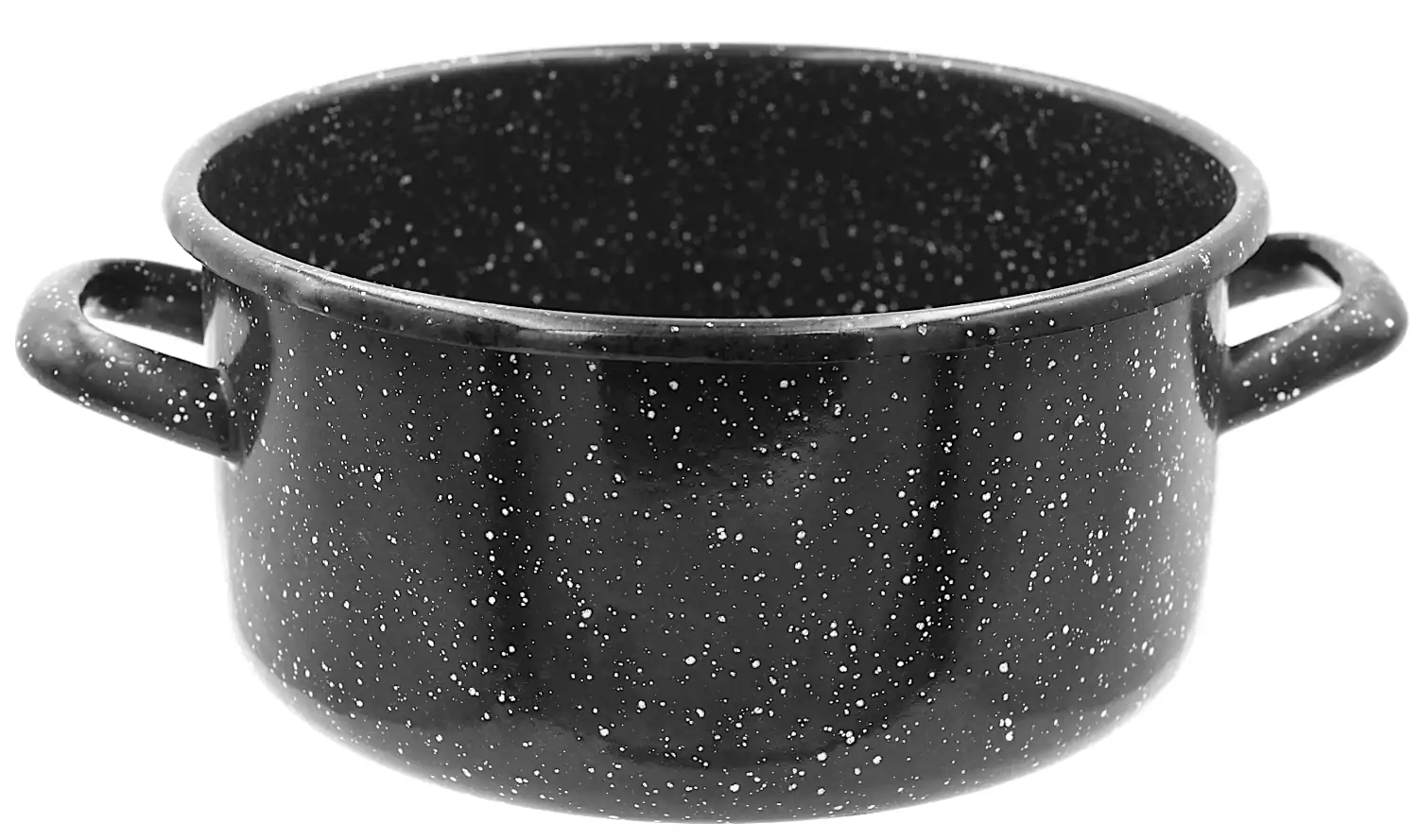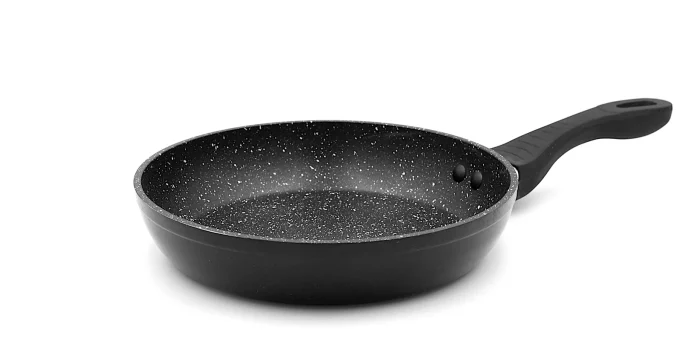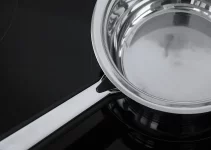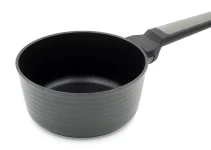I can’t wait to have this discussion about granite cookware pros and cons. Let me tell you why that is.
Recently, I decided to write an article about the best ceramic cookware for gas stoves. You might wonder what ceramic pots and pans have to do with this actual talk about granite cookware pros and cons.
The common factor these two have in common is that they’re both alternatives to teflon cookware.
Thus, ceramic and granite pots and pans are good options for those who are looking for PFAS-free or PFOA/PTFE-free cookware.
The way I see it is this: if you’ve been disappointed by ceramic cookware or you don’t think that it’s what you’re looking for but you definitely want pots and pans that are PFAS/PFOA/PTFE-free, then you’re going to be interested in finding out more about granite cookware.
What Is Granite Cookware?

Another reason that I am interested in granite cookware is because it reminds me of Dutch ovens. The enamel coating is the thing that makes me think of Dutch ovens. But we’re not here to talk about that.
Granite pots and pans are usually made from aluminum or carbon steel or stainless steel. These cores are good conductors, they heat up evenly and they can enable us to cook food faster.
In order to make them non-stick, the metal core is coated with porcelain enamel.
The porcelain enamel coating also doesn’t react to acidic foods.
These cooking tools are certainly not made of granite. They’re named like that because of how they look. These pots and pans are aesthetically similar to granite.
Granite is actually a stone that is used as construction material or as a decorative and architectural stone. It has nothing to do with cooking. But the pots and pans that are our focus here certainly look a bit like granite with that gray look and those white specks.
Granite Cookware Pros And Cons
Now that we know what it is, let’s see which are the pros and cons for granite cookware so that we can see if it’s something we might need. Or if we’re maybe better off with something like cast iron cookware, even if it’s not non-stick. Or if we go for ceramic or teflon coatings in the end.
Pro: Nonstick properties
One of the main reason that people get excited about granite pots and pans is their nonstick properties.
In the same category we have ceramic and teflon coatings. The third is the porcelain enamel that granite cookware uses to give it its nonstick capabilities.
Teflon has become an element that some people want to avoid.
If PFOA/PTFE-free cooking is what you’re aiming for, ceramic and granite are two very popular options. Although, ceramic seems to be the most popular of the two.
Con: Not long-lasting
This is a con that actually applies to non-stick coatings like teflon, ceramic, and porcelain enamel for granite cookware.
We can’t say with certainty how long the coating will last. But it’s believed that out of the three teflon has the highest chances to last a bit longer.
However, porcelain enamel is considered to be harder than ceramic and more resistant to scratches and stains.
Still, these coatings are fragile. That’s why we must take good care of them.
We don’t ever use metal utensils.
We don’t wash them with abrasive sponges
Plus, we let them soak if some food has somewhat stuck to their surfaces.
And some of us prefer washing them by hand even if they’re dishwasher safe to prolong their lifespan.
Even with the best of care, I would say that it’s quite an amazing thing if non-stick cookware lasts beyond 3 years. 5 years is already too long to imagine in most cases.
Thus, when you buy a teflon/ceramic/granite cookware set or pot or pan, you should expect to replace it at some point in the future.
If you go beyond 2-3 years, I’ll call it amazingly good.
It seems that most people are not exactly aware that non-stick coatings are simply not meant to last. But if it only lasts for a few months, then you have every right to get angry.
If you want real longevity, I recommend cast iron cookware. The seasoning is all you have to worry about in that case.
Stainless steel is another famous material for its longevity. However, neither cast iron nor stainless steel are non-stick. But you can learn to cook with them quite quickly.
Pro: PFOA/PTFE-free cooking
As I’ve already mentioned, there are two main things that define a discussion on granite cookware pros and cons: nonstick and something better than teflon, meaning a cookware that is PFOA/PTFE-free.
However, you should always check out that the cooking tools are indeed PFOA/PTFE-free. It’s always best to make sure.
Granite and ceramic are considered safe, their alleged safety is what makes them popular options. These two are the choice for people who are looking for safe or maybe even healthy cooking.
Am I of the same opinion? I really don’t know. It’s not like there are studies that say conclusively that granite cookware is safe and perfect.
In my opinion, a highly seasoned cast iron pot or pan is probably the option to go if you want some peace of mind that you’re using adequate cookware.
Con: Quality control
Since we’re on the topic of safe cooking, let’s take a deeper look at the quality of these granite pots and pans because it matters.
According to this article, the safety of granite cookware depends on how it’s treated and how well it was manufactured.
The thing is that some types of granite cookware are more porous than others. If they’re not properly sealed, that makes them more likely to absorb food and liquids. If that’s the case, you shouldn’t use them.
The thing we should keep in mind is that if the cooking surface is properly sealed and taken good care of, it’s good for use.
Another thing you should pay attention to is that granite pots and pans should be thicker, that’s an indicator of good quality.
Thinner pieces will not retain heat effectively and they can have the probable disadvantage of not lasting as long either.
To maintain the porcelain enamel intact, you shouldn’t use metal utensils that can scratch the nonstick coating and expose the metal underneath. That will make the non-stick quality fly out the window.
Even if a pot or pan is described as being metal utensil safe, I still wouldn’t bring metal anywhere near its interior surface.
Pro: Cheap price
Well, I would say that the cheap price thing is a major pro that makes it stand out.
After all, it can also apply to teflon and ceramic, too, not only to granite cookware.
Regardless, among these granite cookware pros and cons the cheap price feature should be included because we buy a granite pan for about $20-$30. A ceramic pan can also be found in the same price range. And the same goes for teflon pans.
Cookware sets for ceramic, granite and teflon are also sold in the same price ranges. A good, complex set can cost around $200 but it will have plenty of pieces to justify the price. Ceramic might be the most expensive of the three but not by a lot.
Stainless steel pans can be a lot more expensive, we can call it among the most expensive choices.
But if you’re looking for very cheap prices, I believe that nothing can beat cast iron. There are cast iron cookware sets that are sold for about $100. They don’t have that many pieces but we can manage to do a lot of our cooking with them.
Con: Don’t use on glass surface stoves
Glass cooktops are more fragile. Some pots and pans can cause scratches or they can even break a glass cooktop.
I would advise against using granite cookware on a glass cooktop. Although some manufacturers will mention that their pots and pans work on most stoves available: induction, gas, ceramic, electric and infrared cooker.
The fact that it’s induction compatible is an advantage for the granite sets because ceramic sets are rarely induction compatible. They’re better for gas stoves and ovens.
Also, you should check if they can be used in the oven or not. We don’t get the same impediment with ceramic cookware, those are oven safe.
Another thing I should mention as a sort of ending to our discussion about granite cookware pros and cons is to mention that the pieces are light and they can come in handy if you go camping.




